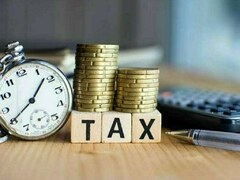GENEVA: The United Nations called Tuesday for a significant overhaul of the global financial system to help the world’s poorest countries and their struggle to fill “enormous financial gaps”.
A report from the United Nations Conference on Trade, Investment and Development (UNCTAD) highlighted how multiple crises, from the Covid pandemic to soaring inflation, and declining foreign direct investment have hit poorer countries particularly hard.
The 46 so-called least developed countries, or LDCs, suffered a sharp economic slowdown in the first years of the pandemic, leaving their combined per capita growth this year 16 percent below target, UNCTAD said.
As a consequence of the economic slowdown, an additional 15 million people have been pushed into extreme poverty, it said.
At the same time, the LDCs face a towering debt crisis, dishing out $27 billion in 2021 to service that debt — up 37 percent from a year earlier, UNCTAD said.
The countries are currently spending almost twice as much on servicing their debt than on healthcare.
LDCs “are in a desperate situation”, UNCTAD chief Rebeca Grynspan told reporters in Geneva, warning that they “stand on the precipice of a fiscal abyss”.
Faced with such towering challenges, the UN agency warned that the LDCs were a far way from reaching the Sustainable Development Goals by the 2030 deadline, as agreed upon by all UN member states in 2015.
As things stand, the countries currently “face an overwhelming $100 billion annual funding gap to meet their SDG transition needs,” Grynspan said, warning that “time is running out”.
While the countries need to do more to mobilise domestic resources, she stressed that they would “need an important amount of the resources from overseas”, cautioning that the existing international financial system was ill-equipped to help.
“Disparities in the international financial structure, unfulfilled promises on climate finance, and the oft-neglected voices of LDCs in financial decision-making underscore a systemic dissonance,” she said.
There have been growing calls from LDCs and others to reform the international financial architecture and the way institutions like the World Bank and the International Monetary Fund provide support.
But Grynspan stressed that “the main decision-making processes concerning the institutions, rules and procedures that govern international finance generally do not sufficiently take into account the interests of the LDCs.”
This was because “these countries have limited economic weight and political influence,” she said.
She pointed out that the LDCs, with a combined population of one billion people, account for just four percent of the voting rights of the World Bank.
And they receive less than 2.5 percent of the general allocation of the IMF’s Special Drawing Rights, a type of reserve currency.
























Comments
Comments are closed.